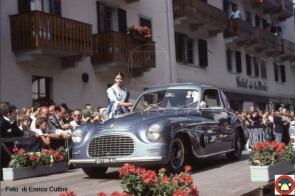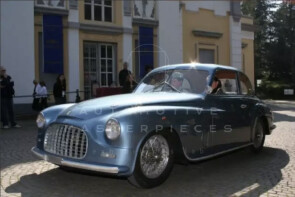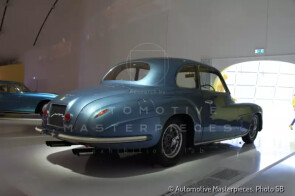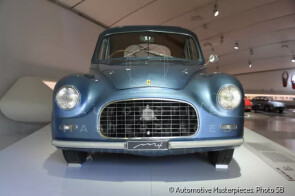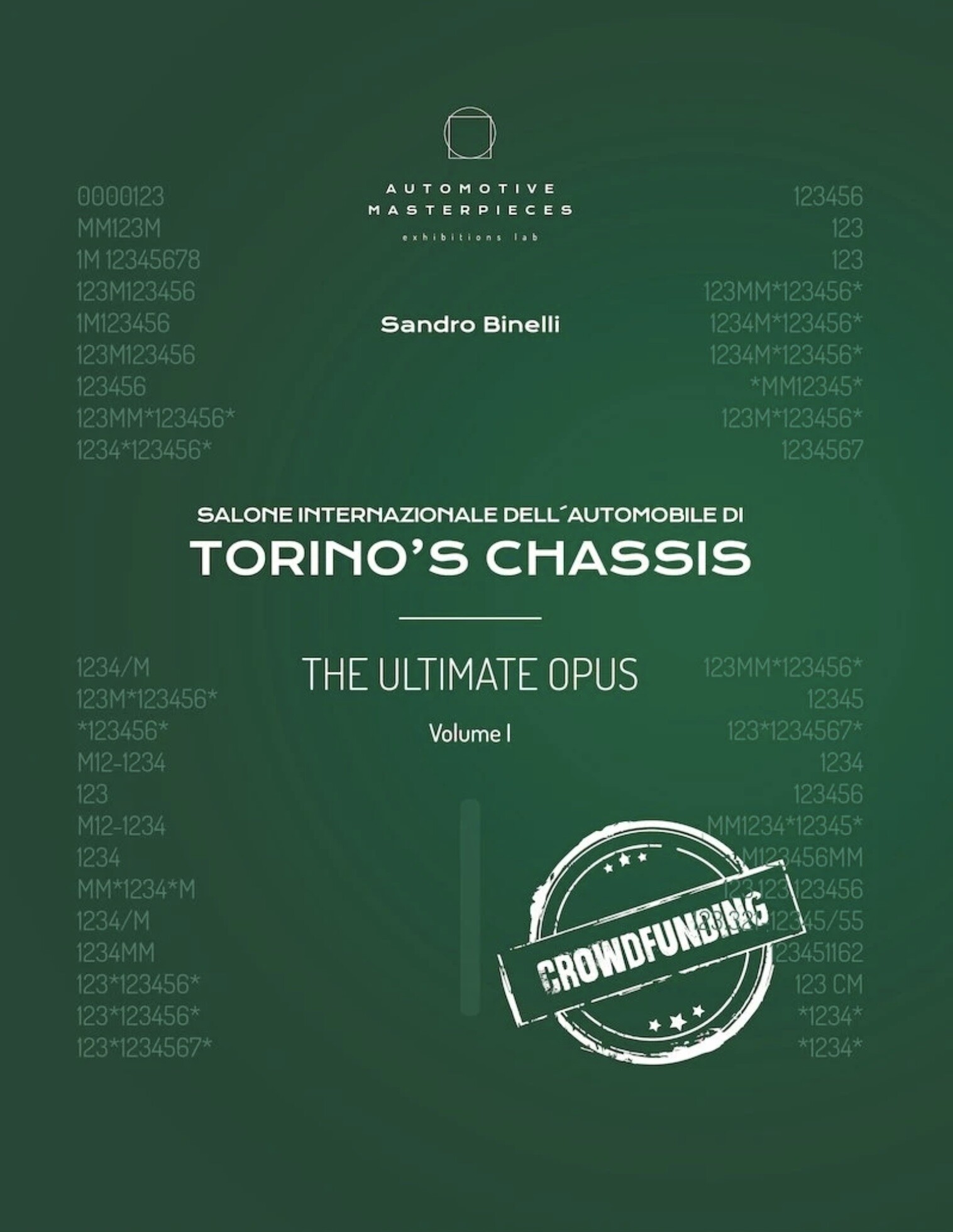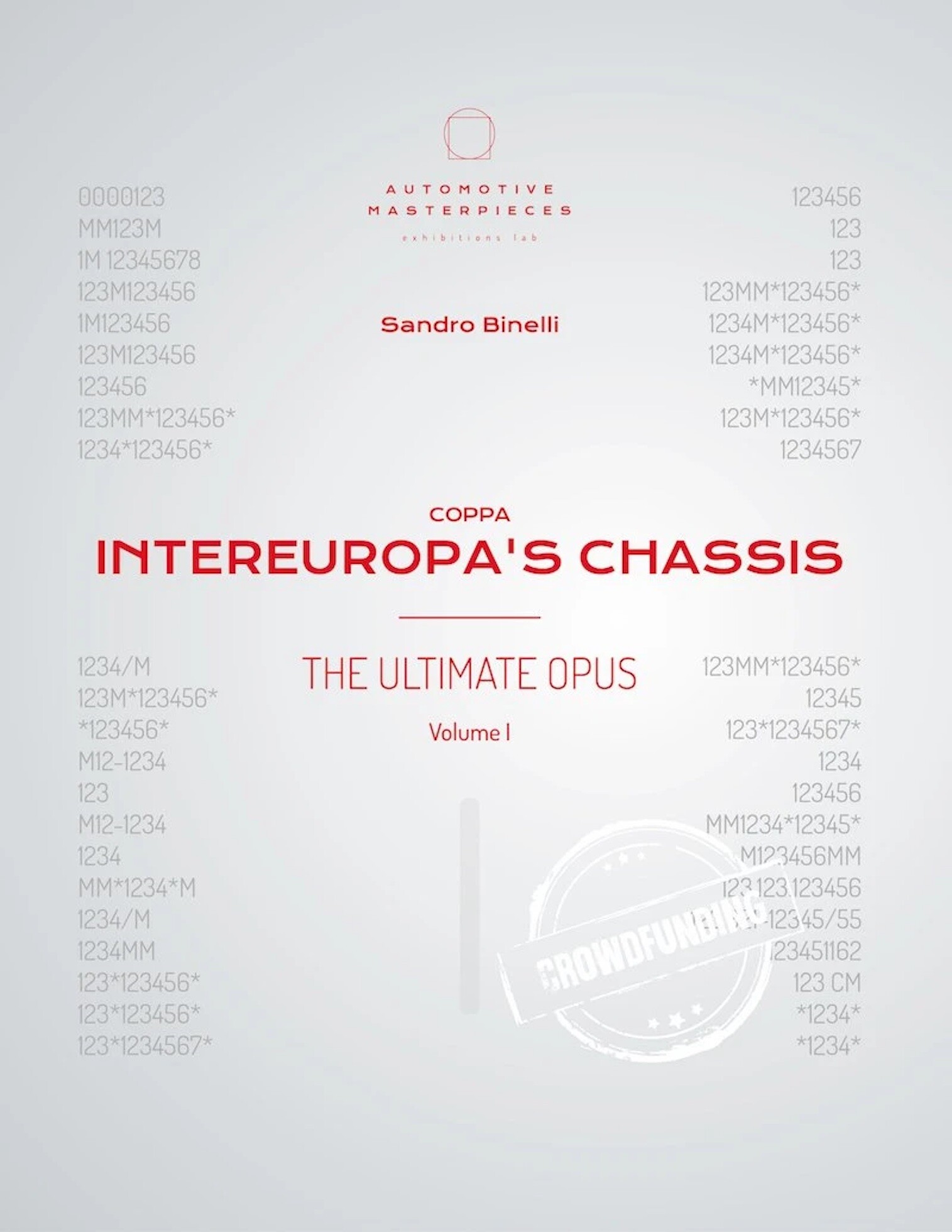
1948 Ferrari 166 S
ON/OFF
Why am I an Automotive Masterpiece?
L. Limited edition cars
no. 3 manufactured, no. 1 remaining, 3rd built
1948 is considered the first true racing season for Ferrari, marked by the debut of the 2-liter version of the 12-cylinder engine, destined for a new model to be used both in the sports category and in Formula Two. It was the beginning of a successful and long-lasting series of cars, the "Tipo 166", which ensured Ferrari's prestige thanks to the first significant international successes. Designed to compete in the 2-liter class, it was an evolution of the 159 S, which in turn was a direct evolution of the first 125, and it debuted as a winner, achieving major successes that year. The 166’s chassis and suspensions had minor changes compared to previous models; it was a dedicated tubular structure designed by Ferrari and produced by Gilco. The car’s engine was the well-tested V12 designed by Gioacchino Colombo, brought to 1995.02 cc to reach the limit of the 2-liter class. Thanks to its 140 hp, it was favored by many gentlemen drivers of the time, while its flexibility and robustness allowed the 166 to be used competitively in any kind of race. As per Ferrari’s use, the car’s name corresponded to the displacement of the single cylinders. In 1953, the 166's built for competition were upgraded with a 9.5:1 compression ratio, individual intakes with three Weber 32 IF/4C carburetors, a new gearbox with synchronized 3rd and 4th gears, and twin fuel pumps. This allowed the 166/53 to produce 160 hp and to stay competitive in the 2-liter class. However, despite these improvements, the successes were limited due to the more competitive Maseratis.
The 166 engine, directly derived from the 159, was initially mounted on some spiders named "Corsa" (aka SC) with torpedo bodies and motorcycle-type fenders. Built in about ten examples, it was used interchangeably in Formula Two (2 liters) and in the sports category with only a few modifications. Ferrari followed its huge success with a prototype for a production car called the 166 Sport: a “road-going” version of the 166 SC. Subsequently, two 166 models named "Sport" (aka S) were built: they were launched at the beginning of 1948 as a berlinetta and a spider and were both built by Allemano. The S models were less extreme than the SC, which used a mixture of gasoline, alcohol, and benzole instead of regular gasoline, but they were still winners: the spider chassis no. 001/S Spider claimed its first victory at the Giro di Sicilia, with Clemente Biondetti, in April 1948. A month later, Biondetti also won the Mille Miglia (for the third time) driving the coupé (003/S). In total, three examples were constructed in the odd chassis number range 001S – 005S, the first two having Allemano bodywork, and the final one a coupe body by Carrozzeria Touring of Milan, built with the Superleggera system and fitted with the panoramic “Aerlux” roof.
This latter car was shown at the 1948 Salone di Torino and won the 1st Coppa Intereuropa in Monza the following year with Count Antonio Sterzi of Milan as driver. It is believed to be the first Ferrari with a 2+2 seating arrangement, the oldest “road-going” Ferrari in existence, and the survivor of this small series. The car is obviously fitted with the Colombo V12 engine. The original engine number was unknown, and now the car is fitted with unit no. 013S: it is the engine of the 166 Inter Touring Coupé displayed at the 1949 Geneva Motor Show.

